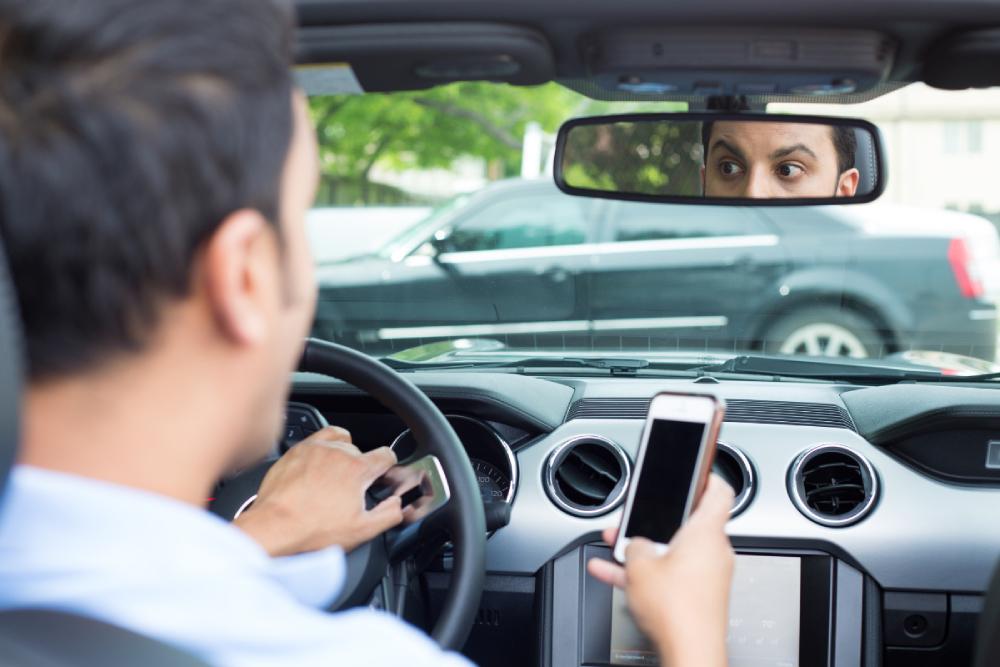Distracted driving has become one of the leading causes of car accidents in recent years. From texting and driving to eating behind the wheel, distractions can take many forms. But when a distracted driver causes an accident, how do you prove they’re at fault?
It’s not as simple as pointing fingers.
Liability in these cases often requires solid evidence, detailed investigations, and sometimes, expert testimony. If you’re dealing with this type of accident, partnering with distracted driving accident lawyers can significantly strengthen your case. Their expertise can help navigate the complexities of proving fault.

Understanding Distracted Driving
Distracted driving involves any activity that takes a driver’s attention away from the road. The three main types of distractions include:
- Visual: Taking your eyes off the road (e.g., looking at a phone).
- Manual: Removing your hands from the wheel (e.g., eating or adjusting the radio).
- Cognitive: Losing focus due to mental distractions (e.g., daydreaming).
In many states, laws explicitly ban certain behaviors, like texting while driving. Proving liability often hinges on showing the driver engaged in these prohibited actions.
Step 1: Gather Strong Evidence
Proving liability starts at the accident scene. If you’re able to, take the following steps to collect evidence:
- Photos and Videos: Capture the vehicles involved, road conditions, and any visible distractions (like a phone in the other driver’s hand).
- Witness Statements: Witnesses can provide valuable accounts of the driver’s behavior before the crash.
- Police Report: This document is crucial. Officers often note if distracted driving appears to be a factor in the accident.
Dashcam footage, if available, can also serve as undeniable proof of distraction.
Step 2: Use Phone Records
One of the most effective ways to prove distracted driving is through phone records. These can reveal whether the driver was texting, calling, or using apps at the time of the accident.
Obtaining phone records typically requires legal intervention. A skilled attorney can help subpoena these records and use them to establish liability.
Step 3: Investigate the Scene Thoroughly
Physical evidence can paint a vivid picture of what happened. For instance:
- Was the driver’s coffee cup spilled across the dashboard?
- Were there signs of abrupt braking or swerving on the road?
- Did the driver admit to being distracted right after the accident?
All these details matter and contribute to building a compelling case.
Step 4: Leverage Expert Testimony
In some cases, accident reconstruction experts are brought in to analyze the crash. These professionals can use evidence like skid marks, vehicle positions, and damage patterns to determine whether distraction played a role.
Expert testimony can be especially impactful in court, offering an objective perspective on what caused the accident.
Step 5: Work With Distracted Driving Accident Lawyers
Insurance companies often downplay distracted driving claims to avoid paying full compensation. That’s why having experienced legal representation is essential.
An attorney will fight to ensure all evidence is presented and negotiate with insurers to secure the best outcome. They’ll also handle time-sensitive tasks, like filing claims within the statute of limitations, so that you don’t lose your chance to recover damages.
Final Thoughts
Proving liability in a distracted driving case takes effort, but it’s not impossible. By gathering evidence, leveraging legal tools, and seeking professional help, you can hold the responsible party accountable.
Remember, the road to justice doesn’t have to be traveled alone. With the right support, you can secure the compensation you deserve and send a strong message about the dangers of distracted driving.
You might also enjoy reading more of Our Stories here!



